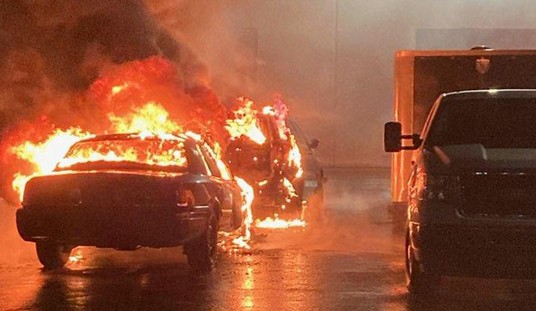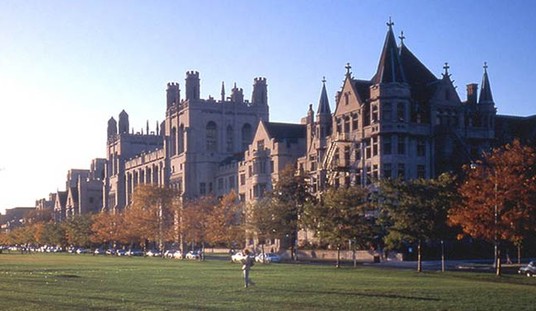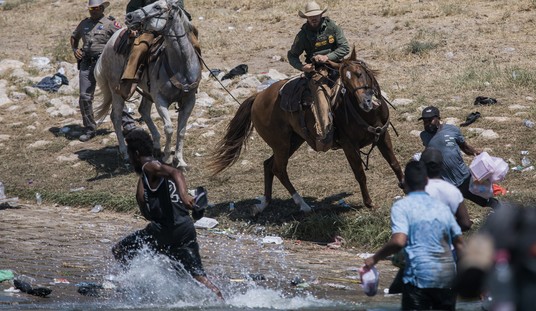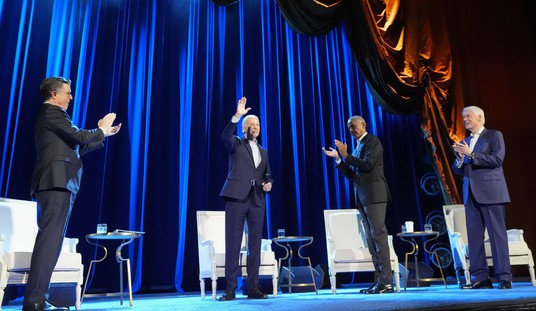So much for the knife-fight theory, eh? In the immediate aftermath of Darrell Brooks’ mass vehicular murder on the streets of Waukesha, reporters heard rumors that Brooks had been fleeing police from another crime scene. That narrative picked up steam to the point where it became the dominant theme in national media coverage of the carnage at the Waukesha Christmas parade.
It’s also entirely false, Waukesha police chief Dan Thompson told the media yesterday. No police pursued Brooks prior to the attack on the parade, nor is this a “terrorist event” (via the Daily Wire):
On Monday, Waukesha police chief Daniel Thompson, responding to rumors that police were pursuing the suspect in the horrific incident on Sunday in Waukesha, Wisconsin, before he plowed into a Christmas parade and killed at least five people and injured more than 40 people others, stated firmly, “I want to dispel some rumors: there was no pursuit that led up to this incident.” He warned, “The Waukesha Police Department website is the only source for information. Do not release information from any other source as it has not been vetted and could lead to false information.”
As I reminded readers yesterday, breaking-news stories — especially about murders and public attacks — generate much confusion in the first minutes and hours. The police-pursuit angle got reported by local CBS and NBC reporters, presumably relying on sources they know, which turned out to be speculative rather than substantive. That happens (although both reporters should have waited for some confirmation), which is why wise news consumers and editors should wait for confirmation before building assumptions off of uncorroborated factoids and rumors.
That applies in all directions, however. In the same breath, Chief Thompson declared that “this is not a terrorist event,” which seems to indicate that police have established that the motive was not overtly political. Later (around 16:45), Chief Thompson says that Brooks was possibly involved in a “disturbance” just prior to the massacre, but police hadn’t even been able to get to that possible crime scene before Brooks launched his attack. This may have been a “fluid” crime by Brooks, in other words, although the chief wants to say as little as possible to protect the integrity of his investigation.
So what about Brooks’ social-media posts? Jim Geraghty argues that they may matter, at least to state of mind, but a prior vehicular attack likely matters more:
On Sunday night, Americans saw the horrific videos of an SUV plowing through innocent people in the Waukesha Christmas parade and wondered how something like that could happen. Now we know: A man with multiple serious criminal convictions, awaiting trial on charges of other acts of violent vehicular mayhem, and with malice in his heart, was walking free when he shouldn’t have been …
Andy Ngo found postings on social media that he contends are Brooks’s which were quickly shut down, indicating a hatred of whites, Jews, and expressing frustration about the Kyle Rittenhouse verdict. Those social-media posts, presuming they are indeed Brooks’s, do not by themselves prove that anger over the Rittenhouse verdict was what spurred Brooks’s rampage . . . but it certainly puts that motive within the realm of possibility. Waukesha police chief Dan Thompson said that there’s no indication that Brooks knew anyone in the parade or along the route.
Brooks’s extensive criminal history suggests that he may just be a violent, angry guy. But even by the standards of violent, angry men, driving your car through a Christmas parade and running over children is extreme.
Put it in the other direction: plenty of people post angry memes and even extreme thoughts about their perceived enemies. Thankfully, very few intend that as anything other than rhetoric. Could it go to state of mind? Absolutely, and one can be sure prosecutors will comb through that material and put it in front of a jury. But can we conclude that BLM, anti-police animus, and/or the Rittenhouse trial was his actual motive? Not yet, and to a certain extent that assumption suffers from the same rationality issue. Why attack a Christmas parade if the Rittenhouse trial was the catalyst? Why not aim for the police — who were there in force — if the motive is BLM or anti-police animus?
To a certain extent, motive is a fool’s errand. This was an irrational act by an evil man, whose crimes stand on their own regardless of explanations. The search for motive may end up being for the benefit of activists more than for a jury or the grieving community of Waukesha. We will all be wiser to let the police and prosecutors put together their case and review the confirmed and corroborated evidence before reaching any conclusions.
Addendum: Of course, as a couple of readers point out, it would be nice if the media followed this advice as well. Instead, they rush to apply motives in certain cases while doing their best to avoid the topic in others. This will be one of the latter … and not out of any principled reason. Kyle Rittenhouse was one of the former, and attorneys for media outlets will hopefully have to deal with that for the next couple of years.







Join the conversation as a VIP Member